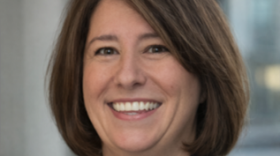The share of North Carolina students attending traditional public schools has fallen as more students move to public charter schools, private schools and home schools.
Back in 2013, about 85% of North Carolina students attended their local K-12 public school. Last school year, that percentage fell to fewer than 77%, because more students have moved to other methods of schooling.
Enrollment at charter schools and private schools has grown steadily year-over-year for the past decade. The share of students being homeschooled grew annually until it peaked in 2020, during the COVID-19 pandemic.
If these trends continue, it will have financial consequences for the public school districts that still serve a large majority of students and are required to accept all students regardless of their needs.
Advocacy groups respond to the trends
Public school advocates and school choice advocates alike say they’ve been tracking these trends.
“Make no mistake about it, more-and-more North Carolina families are exploring their educational options like never before in our state, as is evident by nearly 25% of school-aged children are now attending public charter, private and home schools,” said Brian Jodice, Executive Director of Parents for Educational Freedom in North Carolina, a longtime advocacy group for school choice.
“Parents and families have [a] myriad of reasons why they are exploring educational options,” Jodice said. "The key when looking at enrollment trends like what we are seeing in North Carolina is to ask them why?”
Some of the reasons families have shared with WUNC for switching school options have been to provide in-person instruction at home during the pandemic, to seek individual services for a child’s learning disability at a specialized school, or to attend a private school affiliated with their religion.
“Sometimes a child’s district school is perfect for them, but sometimes it just isn’t a great fit, and that can be for a lot of reasons,” said Lindalyn Kakadelis, Executive Director of the North Carolina Coalition for Charter Schools. "They’re all public schools and I see them as complementing, not competing, with one another.”
The Public School Forum of North Carolina, which advocates for public schools, argues that satisfaction with traditional public schools remains high.
“We know from survey data that parents who send their children to public schools are happy with that choice,” said Lauren Fox, the Forum’s Senior Director of Policy and Research, referencing an annual Gallup poll that routinely asks parents about their satisfaction with their oldest child’s school.
As student populations shift, Fox says that will have financial consequences for traditional public schools that still serve the large majority of students because public schools receive state funding largely on a per-student basis. She says the Public School Forum often hears from superintendents who are worried about this enrollment trend, especially in rural areas.
“When you have small school districts that lose even a handful of students, that is a significant amount of funding – a significant proportion of their funding – that's lost. So, then you're going to have less available funding to serve the needs of the students that are in those schools,” Fox said.
Fox says public schools may have a harder time paying for fixed costs such as facilities, transportation, and teachers that teach specialized subjects if they lose students rapidly.
State policies have supported growth of non-traditional schools
Charter schools are publicly-funded tuition-free schools governed by their own independent, nonprofit boards rather than locally elected school boards. They are exempt from some laws that apply to traditional public schools. For example, they are exempt from: requirements that all teachers be fully licensed or pursuing a teaching license; state laws that govern school calendars; and requirements to provide free and reduced-price meals to low-income students.
The North Carolina General Assembly passed a law establishing charter schools in 2006, and that law capped the number of schools permitted at 100. Then in 2011, led by a recent Republican majority, the state legislature eliminated that cap. Since then, the number of charter schools in the state has more than doubled. Enrollment at charter schools reached almost 141,000 students in Fall 2022.
In the same era, the North Carolina General Assembly has also increased investments of public funds in private schools, which are largely unregulated by state laws. The legislature established the first private school vouchers, known as Opportunity Scholarships, for the Fall 2014 school year. Originally aimed at very low-income students, families can apply the state-funded grants toward tuition at participating private schools.
The state legislature has progressively eased eligibility requirements to apply for Opportunity Scholarships and raised the value of the vouchers over time. This year, the state budget removed income restrictions so any student who attends a private school can receive state money to pay for it — even if they have always attended a private school and would have with or without a voucher. The value of the voucher depends on the student’s family income, with those who qualify for the federal free or reduced-price lunch program receiving an amount equal to the state average per-student allocation to traditional public schools.
Families that home-school their children cannot receive state funding for their education expenses. Home schooling has gained popularity in the past decade.
National reporting by the Washington Post found that some of the top reasons families choose to home-school are: concerns about the school environment including fear of school shootings; a desire to provide moral instruction; and concerns about instruction in public schools.
The recent uptick in home schooling is also in part due to families seeking alternative options when most public schools shifted to remote classes during the height of the pandemic. This is evidenced by the rise and then gradual fall in home-school enrollment, which peaked in Fall 2020.










